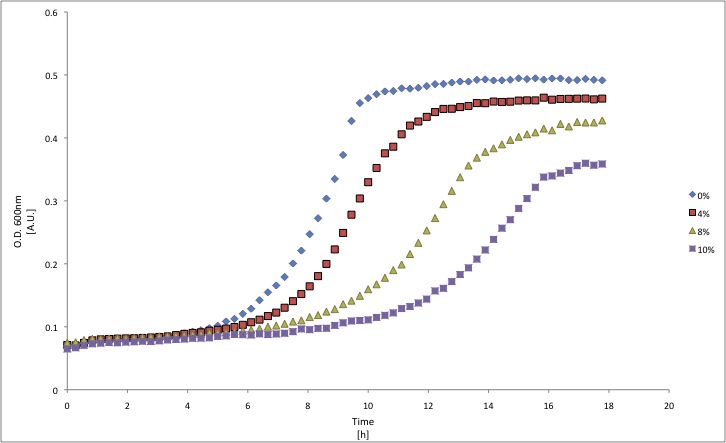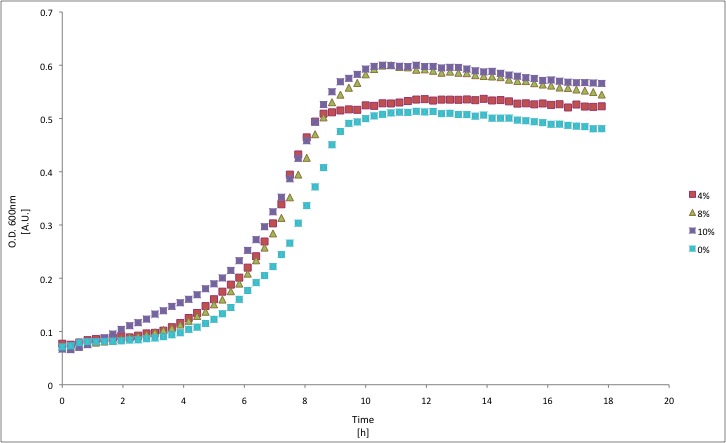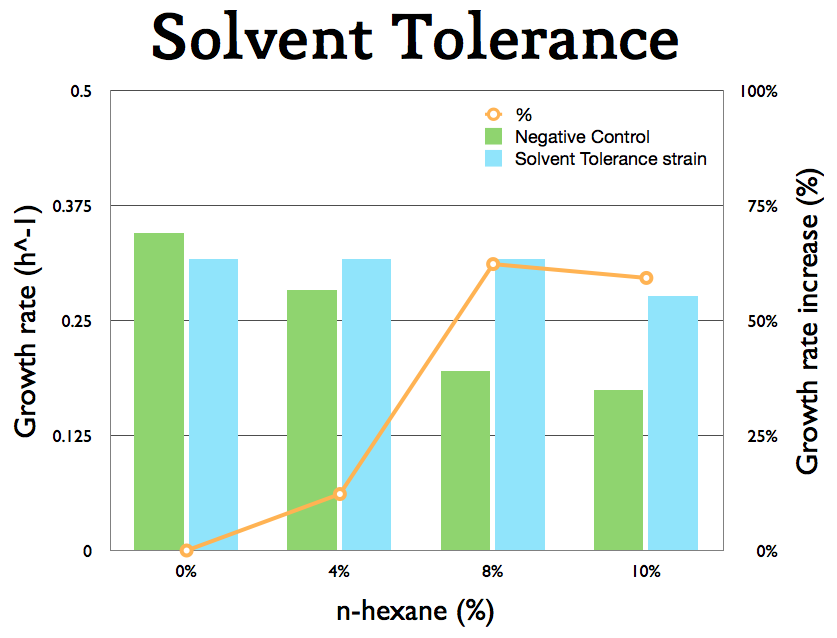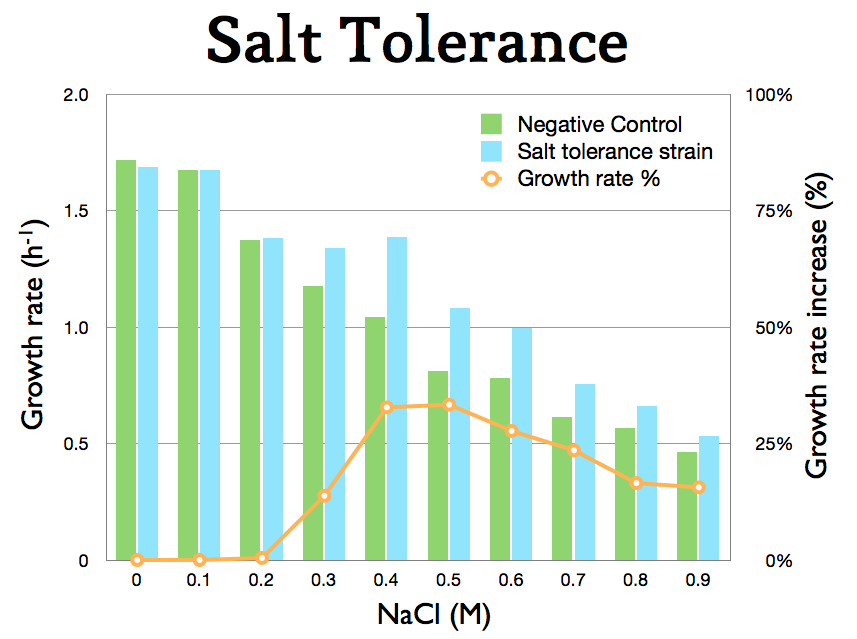Team:TU Delft/Project/tolerance/results
From 2010.igem.org

Survival Resuls & Conclusions
Solvent tolerance
The solvent tolerance cluster ([http://partsregistry.org/wiki/index.php?title=Part:BBa_K398406 BBa_K398406]) was expressed on in E. coli K12. The growth of the cells was tested under different amounts of n-hexane. The results suggest that this part gives to the cells an growth advantage when there's a lot of n-hexane around. The parental strain E. coli K12 seems to grow really slow at 10% (v/v) of n-hexane/M9 mixture.
Whereas our E. coli 406 doesn't have any problem at all.
The growth rates were determined for the exponential fase (using a trendline).
The results are visible in the following chart.
Salt tolerance
We tested the growth of our bbc1 construct ([http://partsregistry.org/wiki/index.php?title=Part:BBa_K398108 BBa_K398108]) as stated in our characterization page.
The growth rates were determined for the exponential fase (using a trendline). The results are visible in the following chart.
At 0.2 M some effects of the hightened increased salt stress starts to appear, at this concentration the cells with our biobrick ([http://partsregistry.org/wiki/index.php?title=Part:BBa_K398108 BBa_K398108]) shows a significant increase in growth rate in comparison to our the control background ([http://partsregistry.org/wiki/index.php?title=Part:BBa_K398027 BBa_K398027]). At higher salt concentrations the salt stress causes a multitude of effects and as our BioBrick simply counters one, our strain also shows effects of higher salt stress. In conclusion one can see that our BioBrick is indeed extends the salt tolerance of the cells functional at concentrations greater higher then 0.3 M Sodium Chloride. The general increase in tolerance varies between 10 and 35% depending on the Sodium Chloride concentration.
Future prospects
We hope that the salt tolerance can be increased further by adding systems (such as ion pumps) to ensure the intracellular threshold and minimize the effects of salt stress even further. As the host organism would then be able to maintain growth at lethal concentrations of both salt and alkanes. This would allow future generations of igemmers to create cultures in a variety of different media, opening a new field of possibilities.

 "
"



